Results
-
 £340.99
£340.99T-Bone Concerto (Complete Edition) - Johan de Meij
The T-Bone Concerto was Johan de Meij's first composition for solo instrument and symphonic band. It consists of three movements called respectively 'Rare', 'Medium' and 'Well Done'. In addition to the solo trombone, an important role has been allotted to a kind of chamber music ensemble within the band. This group introduces new thematic material and accompanies the soloist, thus creating a delightful transparant accompaniment. The ensemble consists of a double wind quintet (2 flutes, 2 oboes, 2 clarinets, 2 french horns and 2 bassoons) plus a cor anglais and a double bass. Parts I and II are written in the A-B-A form and allow the soloist to display both the technical and thelyrical characteristics of the instrument. Part III at first develops into a kind of neo-baroque style using the thematic material of the first and second movement, and finally leads to a triumphant finale and a virtuoso conclusion.
Estimated dispatch 7-14 working days
-
£110.99
T-Bone Concerto, Part II - Medium - Johan de Meij
The T-Bone Concerto was Johan de Meij's first composition for solo instrument and symphonic band. It consists of three movements called respectively 'Rare', 'Medium' and 'Well Done'. In addition to the solo trombone, an important role has been allotted to a kind of chamber music ensemble within the band. This group introduces new thematic material and accompanies the soloist, thus creating a delightful transparant accompaniment. The ensemble consists of a double wind quintet (2 flutes, 2 oboes, 2 clarinets, 2 french horns and 2 bassoons) plus a cor anglais and a double bass. Part II is written in the A-B-A form and allow the soloist to display both the technical and the lyricalcharacteristics of the instrument. Part III at first develops into a kind of neo-baroque style using the thematic material of the first and second movement, and finally leads to a triumphant finale and a virtuoso conclusion.
Estimated dispatch 7-14 working days
-
 £129.99
£129.99Aquarium - Johan de Meij
The Suite 'Aquarium' is Johan de Meij's third composition for symphonic band and features six tropical fishes, each of them represented by a motif, and surfacing as such in several guises. The composition consists of three movements of which the second and third merge uninterruptedly into each other. I) Allegretto grazioso (Neon Tetra, Electric Eel and Angelfish) II) Andante / Adagio (Sea Horse and Zebrafish) III) Finale: Allegro giocoso (Guppy & Co.) The Neon Tetra motif functions as a kind of 'Leitmotiv' and descibes the beautifully coloured, frisky fish: A number of variants have been derived from this theme and will also appear in the other movements.The Electric Eel in fact is not represented by a motif, but by a rhythm based on the restless electric pulses made audible in some aquaria. The Angel fish is represented by elegant cluster chords. In the second movement the Sea Horse emerges out of the water vegetation and starts a dialogue with the Zebrafish, which is represented by one melodic phrase in unison, getting more and more threatening by added parallel fifths and octaves. Simultaneously with the Sea Horse motif the Neon Tetra theme emerges, this time in 3/4 time and in Eb minor. The third movement starts with only two instruments (trumpet and xylophone), but as it is often the case with Guppies their number rapidly increases. Piccolo and Alto Saxophone introduce the Guppy Theme followed by several instrumental combinations. Every theme from the first movement 'swims by' once more, after which the principal motif leads us to a brilliant ending.
Estimated dispatch 7-14 working days
-
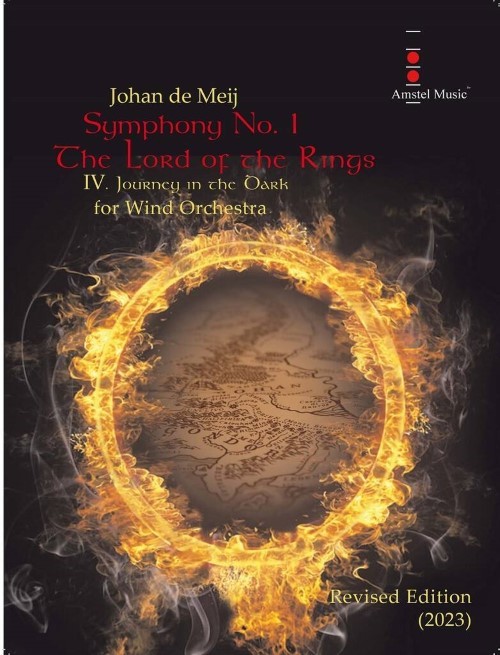 £132.00
£132.00Journey in the Dark (from Symphony No.1: The Lord of the Rings) (Concert Band - Score and Parts) - De Meij, Johan
Revised 2023 editionJohan de Meij's first symphony The Lord of the Rings is based on the trilogy of that name by J.R.R. Tolkien. This book has fascinated many millions of readers since its publication in 1955. The symphony consists of five separate movements, each illustrating a personage or an important episode from the book. The fourth movement describes the laborious journey of the Fellowship of the Ring, headed by the wizard Gandalf, through the dark tunnels of the Mines of Moria. The slow walking cadenza and the fear are clearly audible in the monotonous rhythm of the low brass, piano and percussion. After a wild pursuit by hostile creatures, the Orks, Gandalf is engaged in battle witha horrible monster, the Balrog, and crashes from the subterranean bridge of Khazad-D m in a fathomless abyss. To the melancholy tones of a Marcia funebre, the bewildered Companions trudge on, looking for the only way out of the Mines, the East Gate of Moria.Duration: 9.00
Estimated dispatch 7-14 working days
-
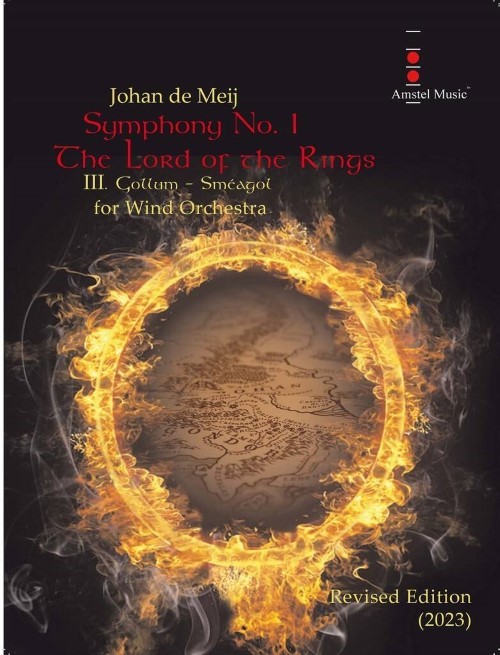 £132.00
£132.00Gollum (from Symphony No.1: The Lord of the Rings) (Concert Band - Score and Parts) - De Meij, Johan
Revised 2023 EditionJohan de Meij's first symphony The Lord of the Rings is based on the trilogy of that name by J.R.R. Tolkien. This book has fascinated many millions of readers since its publication in 1955. The symphony consists of five separate movements, each illustrating a personage or an important episode from the book. The third movement describes the monstrous creature Gollum, a slimy, shy being represented by the soprano saxophone. It mumbles and talks to itself, hisses and lisps, whines and snickers, is alternately pitiful and malicious, is continually fleeing and looking for his cherished treasure, the Ring.Duration: 9.45
Estimated dispatch 7-14 working days
-
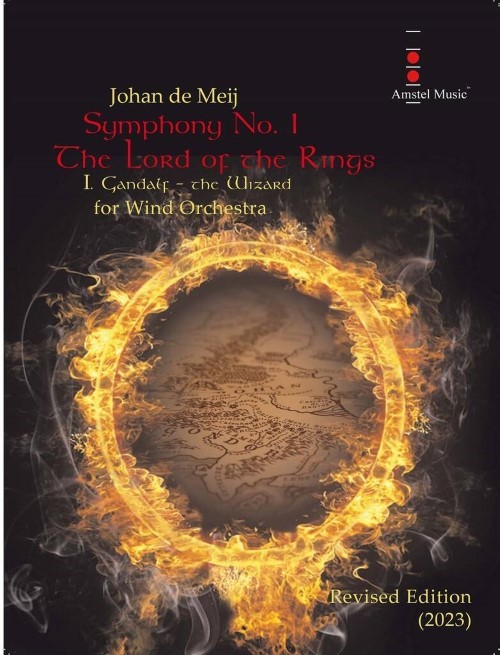 £132.00
£132.00Gandalf (from Symphony No.1: The Lord of the Rings) (Concert Band - Score and Parts) - De Meij, Johan
Revised 2023 editionJohan de Meij's first symphony The Lord of the Rings is based on the trilogy of that name by J.R.R. Tolkien. This book has fascinated many millions of readers since its publication in 1955. The symphony consists of five separate movements, each illustrating a personage or an important episode from the book. The first movement is a musical portrait of the wizard Gandalf, one of the principal characters of the trilogy. His wise and noble personality is expressed by a stately motif which is used in a different form in movements IV and V. The sudden opening of the Allegro vivace is indicative of the unpredictability of the grey wizard, followed by a wild ride on his beautiful horse, Shadowfax.Duration: 6.30
Estimated dispatch 7-14 working days
-
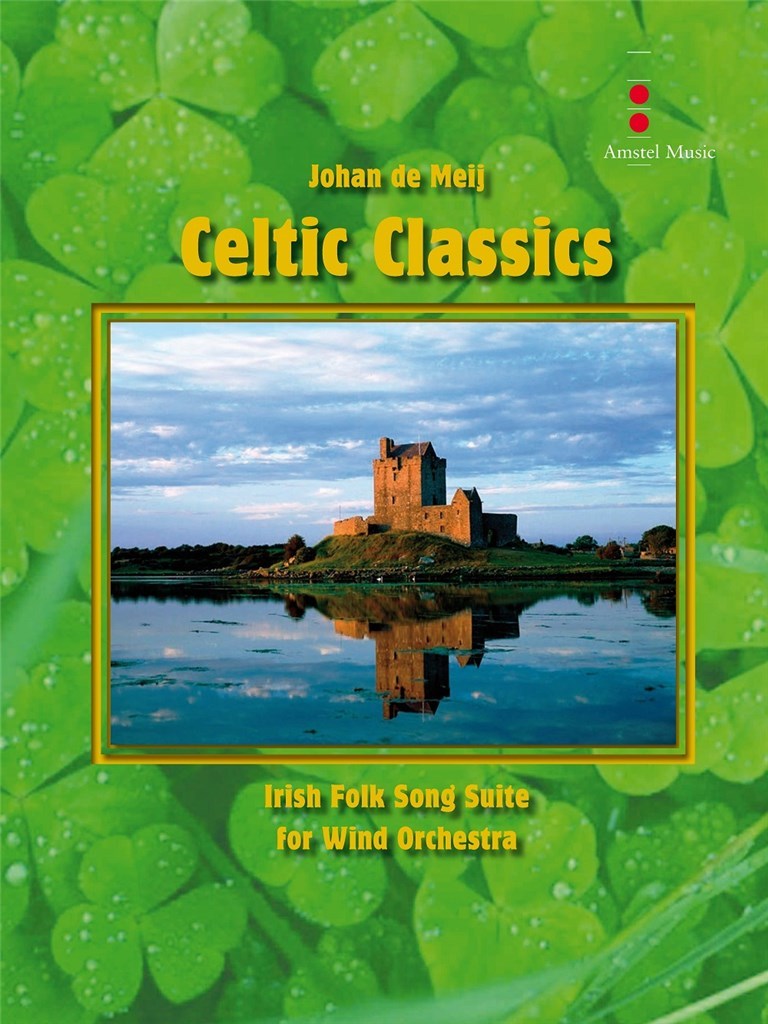 £110.00
£110.00Celtic Classics (Concert Band - Score and Parts) - De Meij, Johan
Irish Folk Song Suite. Another exciting folk song suite based on traditional Irish songs, from the sequel of Johan de Meij's successful At Kitty O'Shea's and Songs from the Catskills. Duration: 6.45
Estimated dispatch 7-14 working days
-
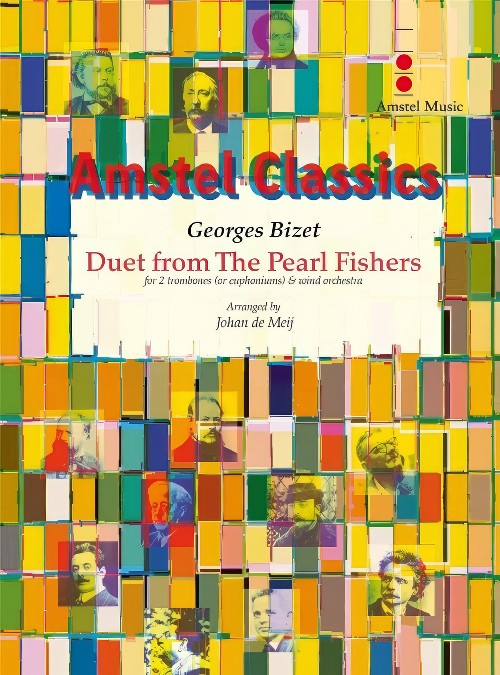 £77.50
£77.50Duet from The Pearl Fishers (Trombone or Euphonium Duet with Concert Band - Score and Parts) - Bizet, Georges - De Meij, Johan
Les Pecheurs de Perles (The Pearl Fishers) is an opera in three acts by French composer Georges Bizet, who particularly made his fame with his opera Carmen. The friendship duet Au fond du temple saint, generally known as The Pearl Fishers Duet, is one of the best known in the opera literature. This arrangement for two trombones was written for and dedicated to trombone legends Joseph Alessi and Jorgen van Rijen. It serves as a possible encore piece in combination with Two-Bone Concerto, which was also written for them. The duet can also be performed by two euphoniums, or as the original vocal duet for tenor and baritone voice. Duration: 4.30
Estimated dispatch 7-14 working days
-
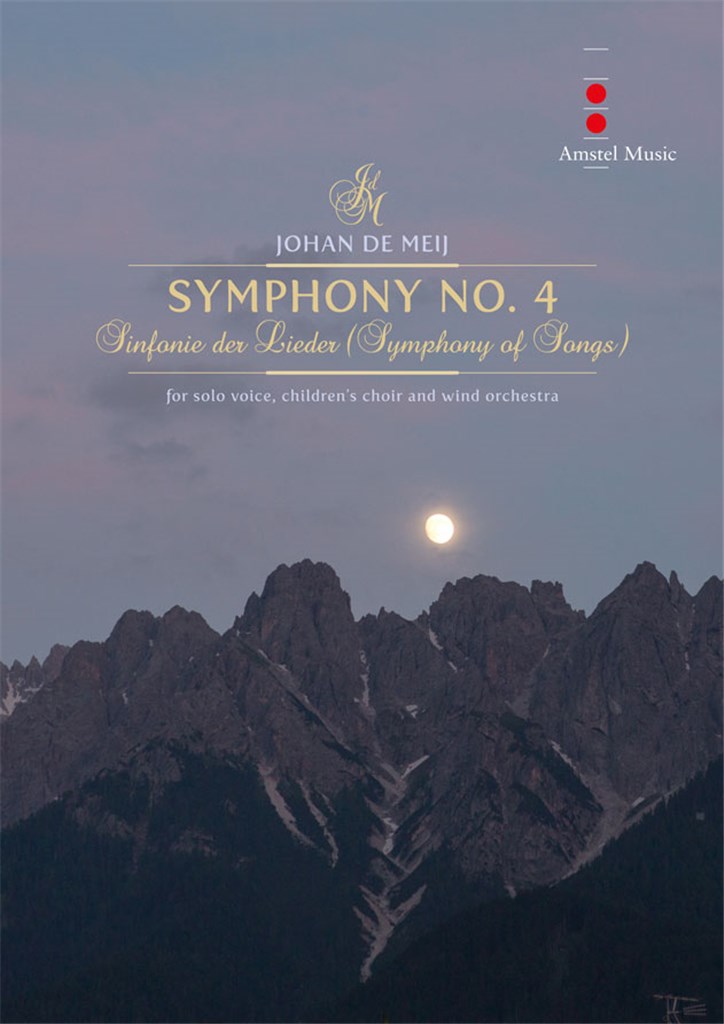 £1.95
£1.95Symphony No.4: Symphony of Songs (SATB Choral Octavo) - De Meij, Johan
Johan de Meij's 4th Symphony for solo voice, children's choir and wind orchestra is inspired by a variety of 19th century German poems.The first three movements use lyrics from the same source as Gustav Mahler did earlier: Kindertotenlieder by Friedrich Ruckert.:Ein Jahr ist nun geschwundenWenn zur Thur hereinWiedersehnThe second half of the symphony continues on the death theme, using a poem by Heinrich Heine (Two Brothers). The last two songs, Early Spring and Song of the Harlequin by Hugo von Hofmannsthal are a metaphor for rebirth, new life and hopeZwei Bruder (Heinrich Heine)Vorfruhling (Hugo von Hofmannsthal)Liedchen des Harlekin (Hugo von Hofmannsthal)Duration: 30:00
Estimated dispatch 7-14 working days
-
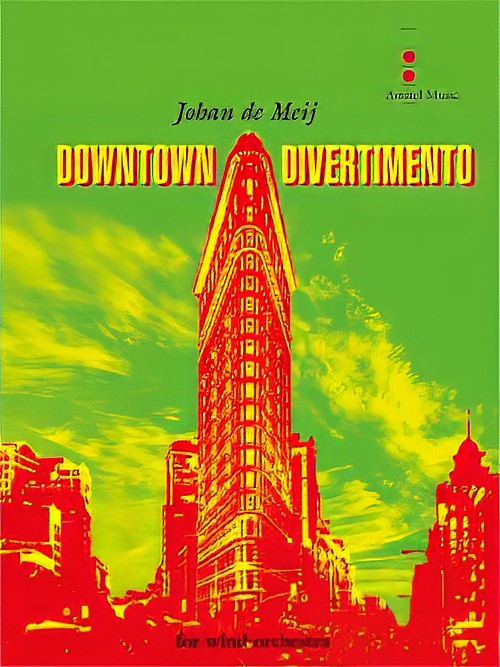 £143.00
£143.00Downtown Divertimento (Concert Band - Score and Parts) - De Meij, Johan
The inspiration for Downtown Divertimento comes from Johan de Meijs daily wanderings in Chelsea, in lower Manhattan. The day begins with a leisurely walk to Madison Square Park with his dog Alice. They visit the dog run where she meets up withother city canines. On the way back they have a moment of reflection looking at the nearby Flatiron Building, the striking triangular city landmark. Johan goes for a run later in the day. His jogging shoes naturally head for The Highline, anabandoned railway viaduct that was transformed into a lushly landscaped National Park. He absorbs the spectacular views of the Hudson River and the majestic New York skyline as if seeing them for the first time. The movements are: 1) Dog Play (at Madison Square Park); 2) Flatiron Reverie; 3) Hitting the Highline. Duration: 11.00
Estimated dispatch 7-14 working days
